When I was a child I loved looking for fossils on the Isle of Wight with my family. I famously tripped over a rock on Sandown beach below the cliffs and the rock that I’d tripped on, contained a fantastic fossil of an ammonite.
My dad and brother were very impressed at my accidental find! I was always tripping over something when I was younger but this one time was worth it.
The Isle of Wight is known as a fossil hunters paradise, and what a beautiful place to go exploring and discover some prehistoric artifacts.
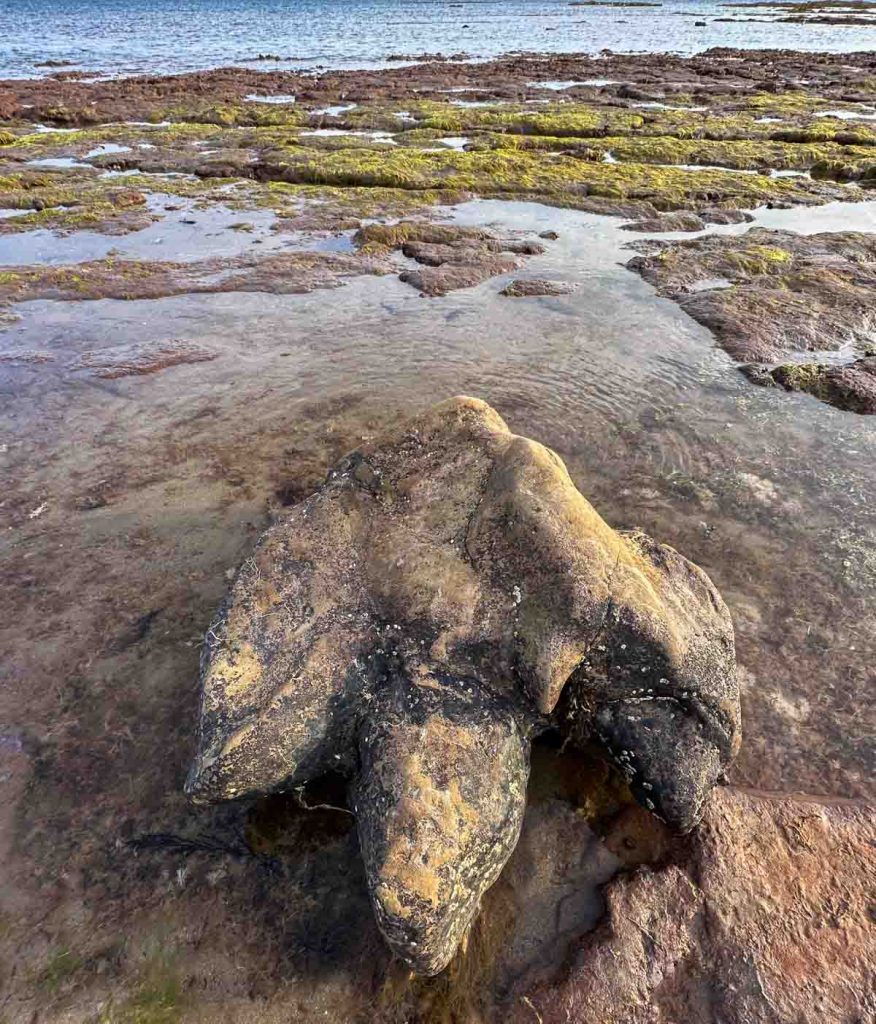
Dinosaurs on the Isle of Wight
The Isle of Wight is also known as “The Dinosaur Isle”. New species of Dinosaurs are being discovered on the Island all the time. The first was discovered in the early 1800s and now they are discovering more and more on the beaches and in the cliffs.
The most recent discovery was in 2024 and was discovered by Nick Chase. It was a large plant eating dinosaur which was named Comptonatus Chasei ( after Nick Chase).
It was the most complete dinosaur that has been unearthed in the UK this century and was found at Compton Bay.
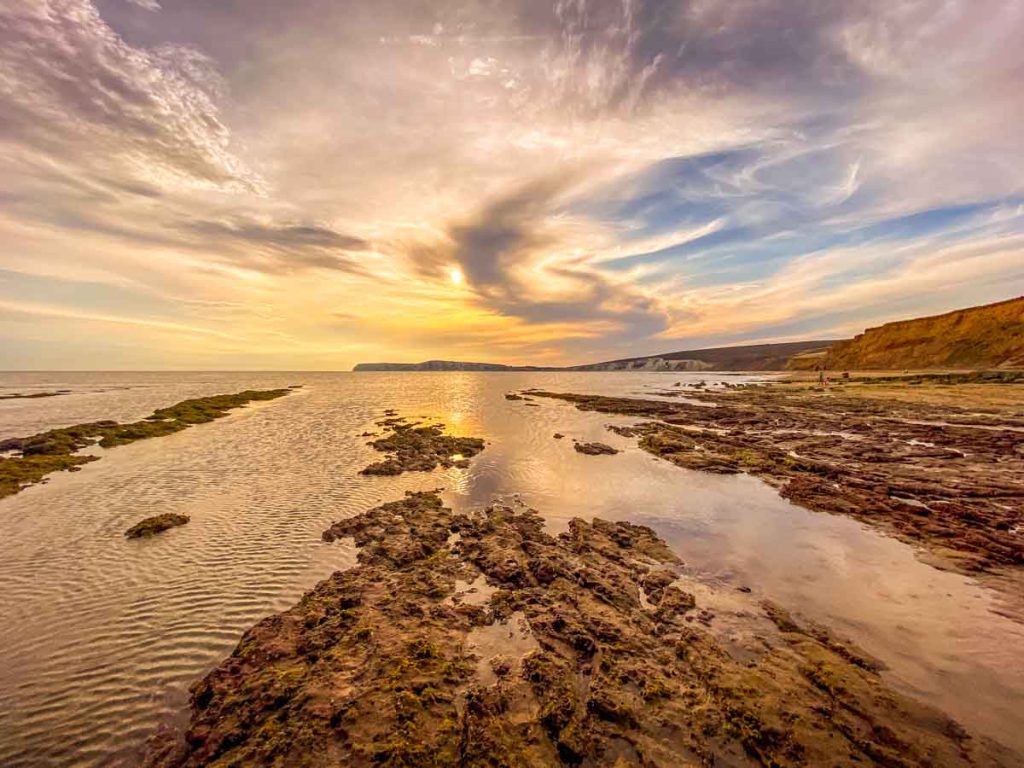
There are lots of Dinosaur related visitor attractions on the Isle of Wight and a museum in Sandown.
The best place to go to see some models of Dinosaurs is Blackgang Chine where they move and roar. A great place for children who love the Jurassic period.
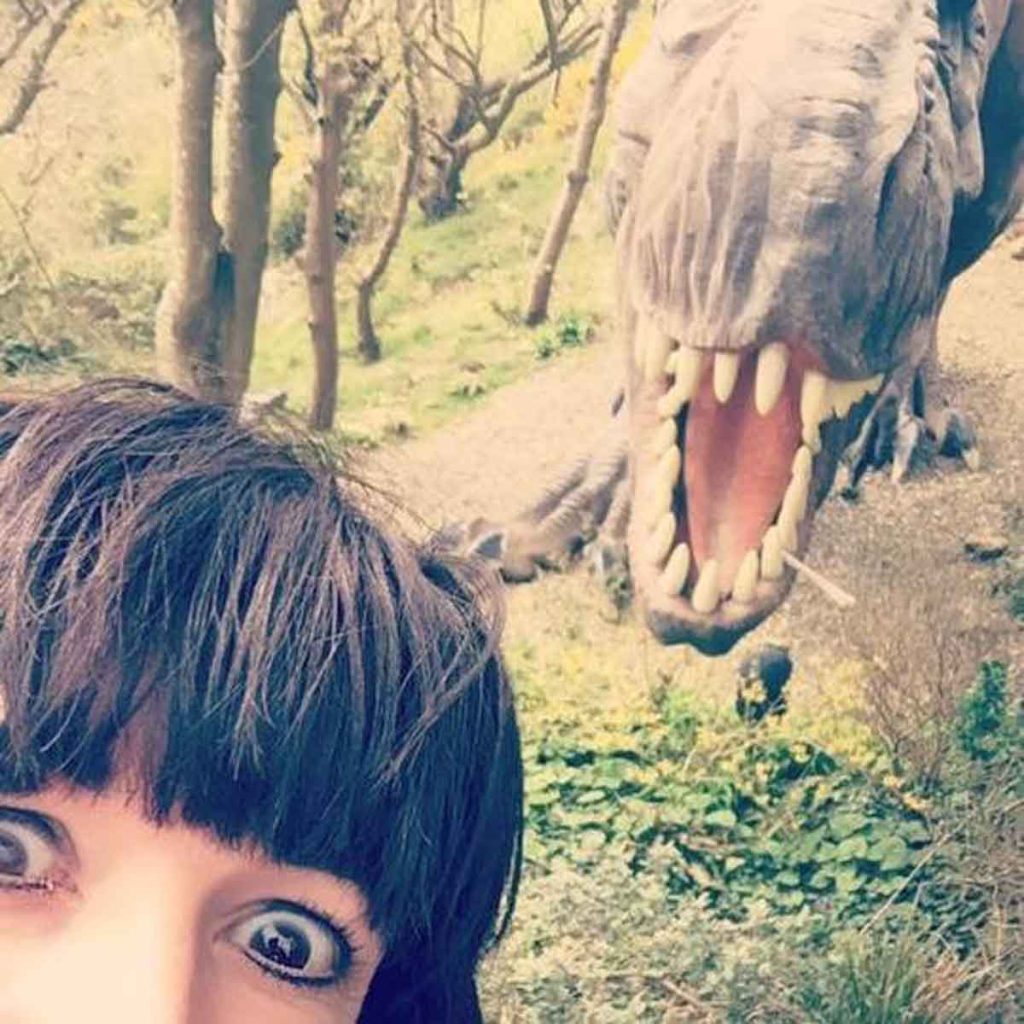
The Isle of Wight is considered to be one of the most prolific places to find dinosaur remains in Europe. Experts have found species here including Neovenator, Eotyrannus and Polacanthus.
We had seen some pictures of the dinosaur footprints on Compton Bay and so we decided to go and explore and have a look for ourselves.
Compton Bay
Compton Bay is on the West side of the Island and is known for its spectacular views along the coast and coloured sands on the cliffs. It is also famous for its dinosaur footprints.
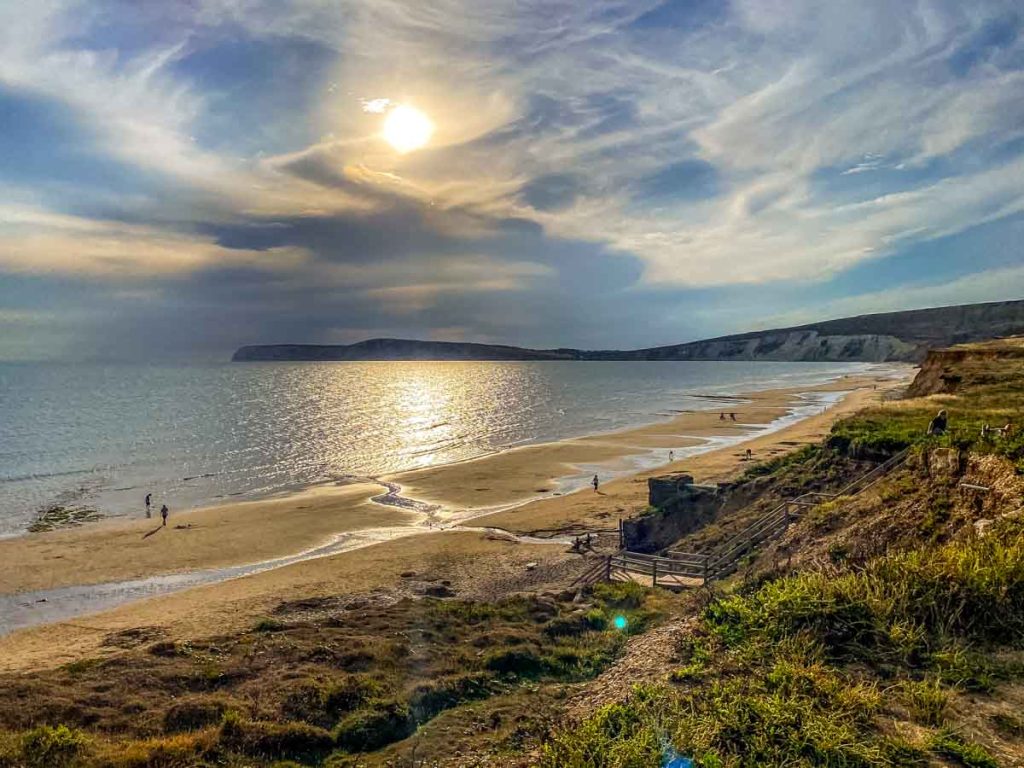
The footprints can be found by going down the wooden steps to the beach and turning to your left ( when facing the sea) and then walking around to Hanover Point. There you will find some large three toed Iguanodon foot casts at the foot of the cliffs at low tide.
Before you go to Compton Bay exploring it is better to check the tides, as the beach is quite a narrow one and the best views of the footprints are at low tide.
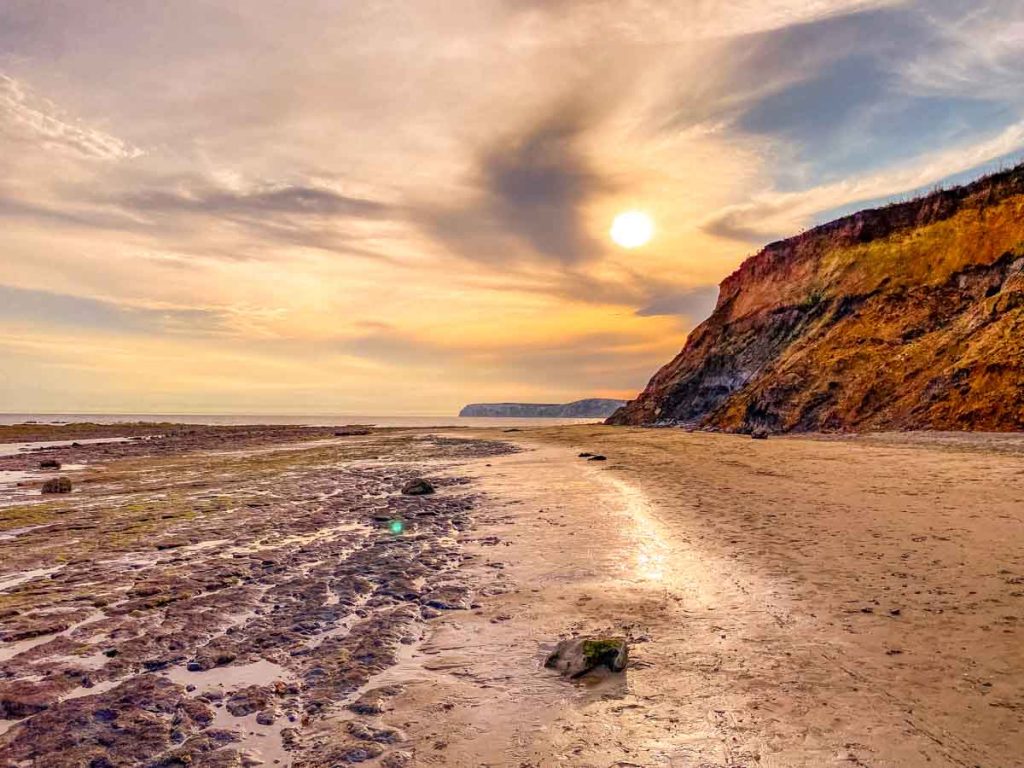
We parked up in the carpark and went down the steps to find the footprints. The beach was spectacular. The sea was glistening in the sun and looked so inviting, you just wanted to run straight in. We were lucky and saw lots of the footprints and it was just so exciting to actually stand by actual, real dinosaur footprints. Wow. What an amazing discovery.
History of the Footprints
The prehistoric footprints are from the late Cretaceous period which is about 140 million years ago !!!
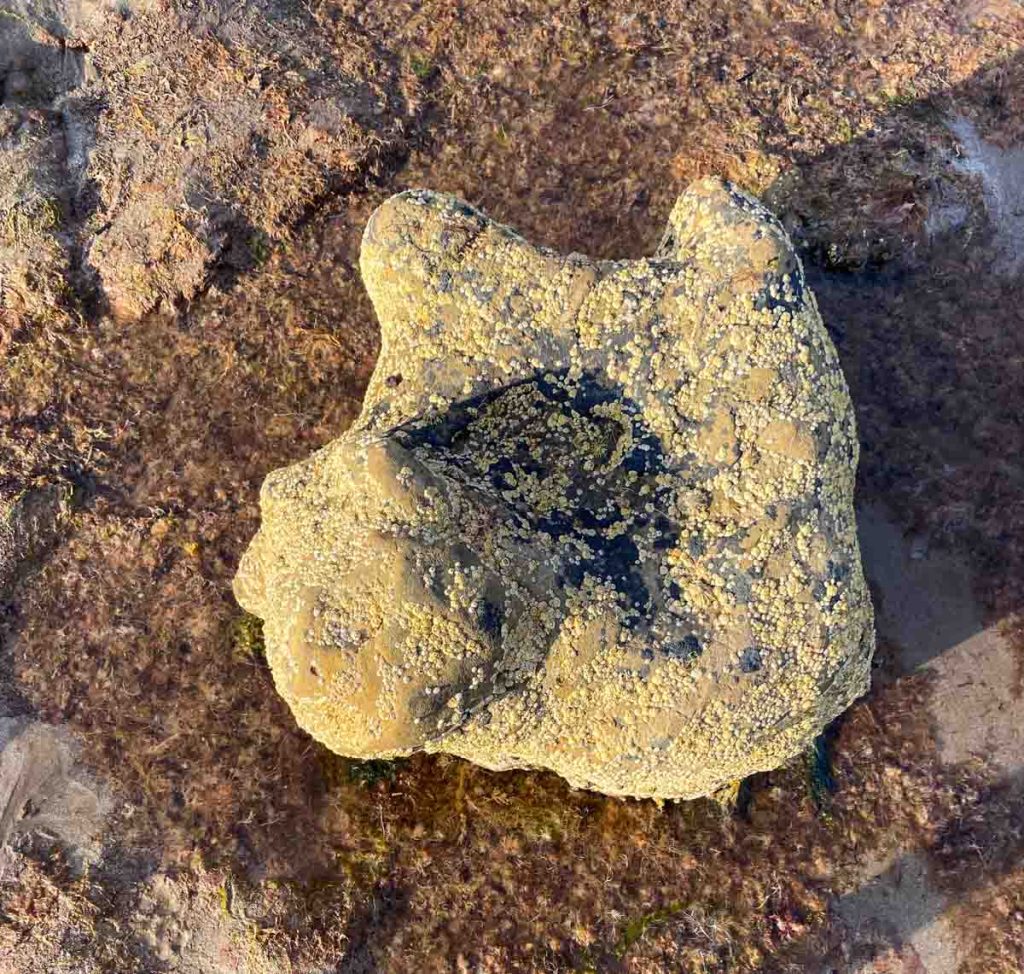
As the cliffs are being eroded by the strong waves from the sea at Compton Bay, more fossils are being found in debris from the soft cliffs.
The cliffs at Compton Bay are fabulous and multicoloured.
So far over 20 different species have been discovered there, some of which are unique to the Island.
These footprints at Compton Bay were discovered in the 1990s. It was a huge discovery and created great excitement among Paleontologists who wanted to find out more about habitats and the behaviour patterns of dinosaurs.
The depth of the footprint lets them know how big and heavy the dinosaur was, and even what type of dinosaur it was.
They were discovered by amateur fossil hunters and local geologists.
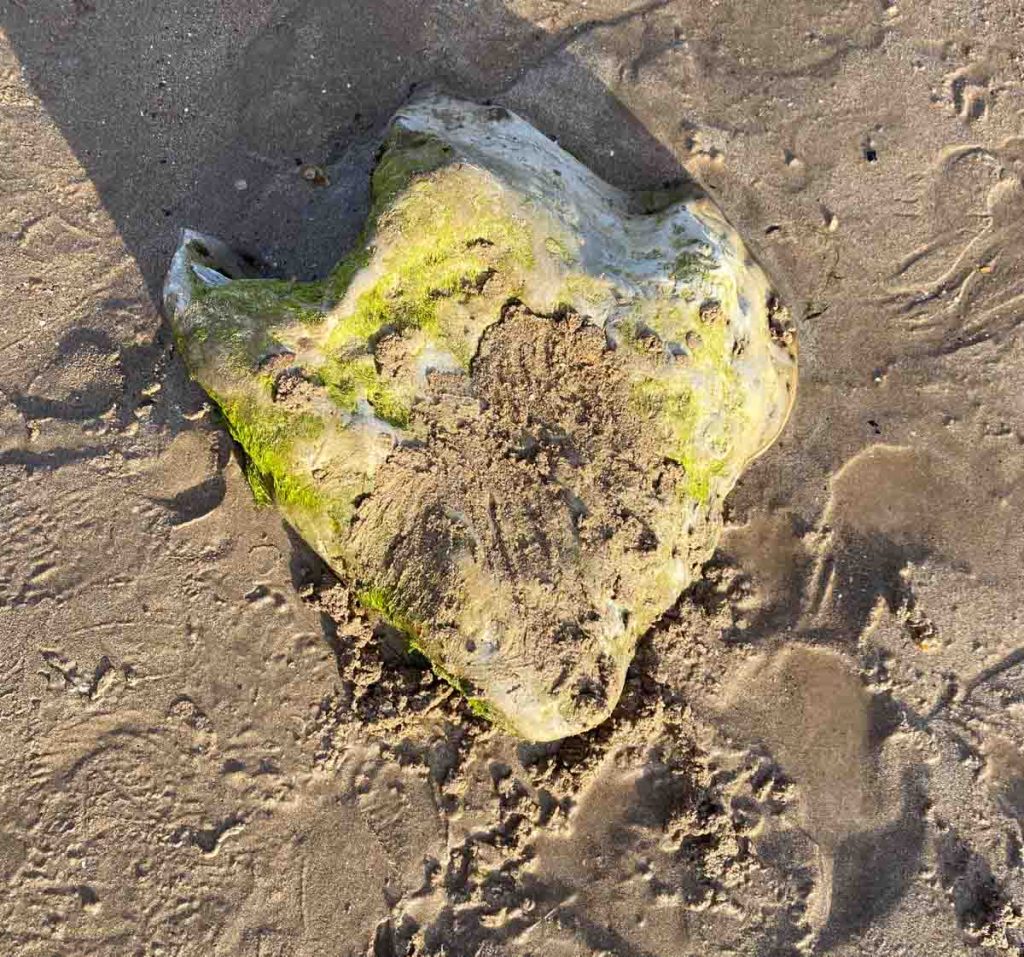
What dinosaurs left these Footprints
The footprints at Compton Bay are said to be from theropod dinosaurs. They were bipedal and mostly carnivorous. They are thought to be Allosaurus and other large predators.
Some of the prints are also thought to be from large herbivore dinosaurs.
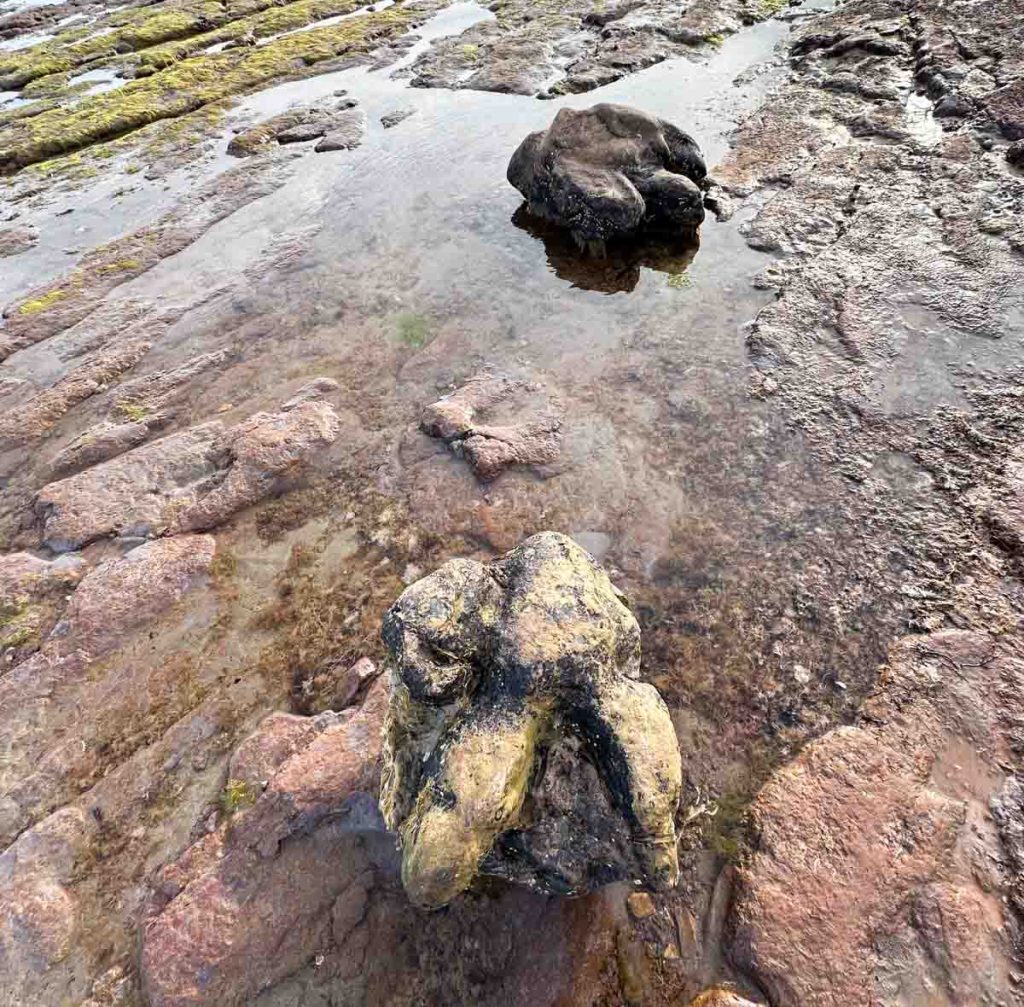
How were the footprints formed?
The prints were created when the dinosaurs trod on the soft sediment preserving the print through millions of years. They became fossilised when the sediment hardened.
You can see this Jurrasic type of sediment when the tide is out.
What else can you find at Compton Bay
You can find fossilised oyster shells, ammonites and sponge formed flints. If you look closely enough you can see smaller talon indentations.
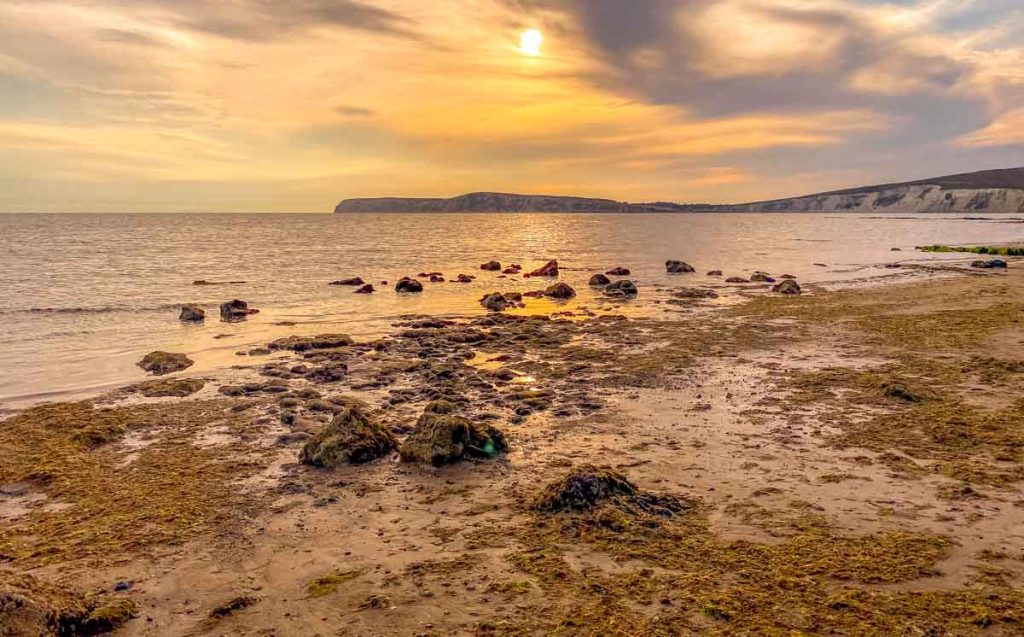
There is also a shipwreck at Compton Bay which can only be seen at very low tide. I was gutted that we didn’t get to see this when we were visiting but we are definitely going to go back and look for it, as it looks incredible.
The shipwreck is SS Carbon. It was a tug boat that was steam powered. She was apparently being towed from Portland to Southampton in 1947 to be salvaged, when the line snapped and the tug boat hit the rocks.
Where should you look for Fossils?
Look at the rocks, stones and loose gravel. You can often find fossils embedded in rocks that have fallen from the cliffs.
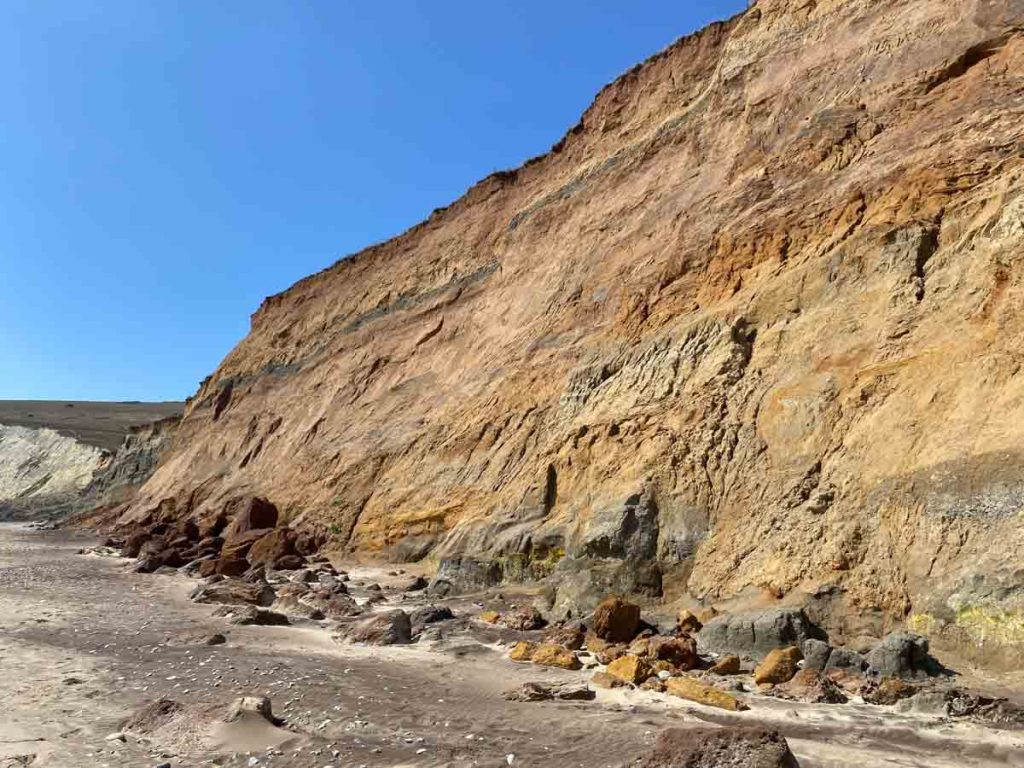
Look for Dinosaur teeth ( big black teeth), Dinosaur bones which would be shiny, honeycombed and black in colour or maybe find some fossilised wood.
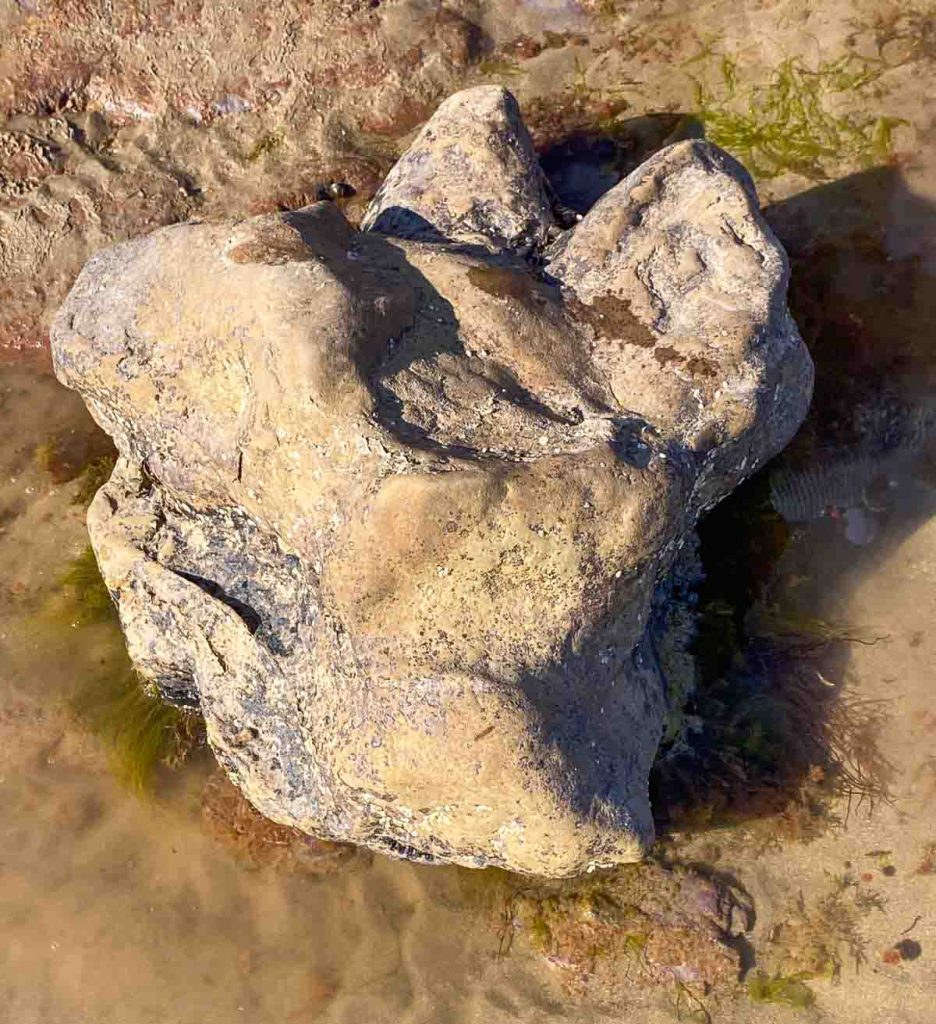
Guided Tours
You can book a guided tour of Compton Bay if you would like to know more about it and get help with fossil hunting.
You can book tours at these local places;
- Wight Coast Fossils organise group tours and bespoke experiences.
- Island Gems do public and private fossil hunting tours.
- The National Trust also run their own fossil walks.
- The Dinosaur Expedition Centre, which is near Brighstone, they do fossil walks and expeditions too.
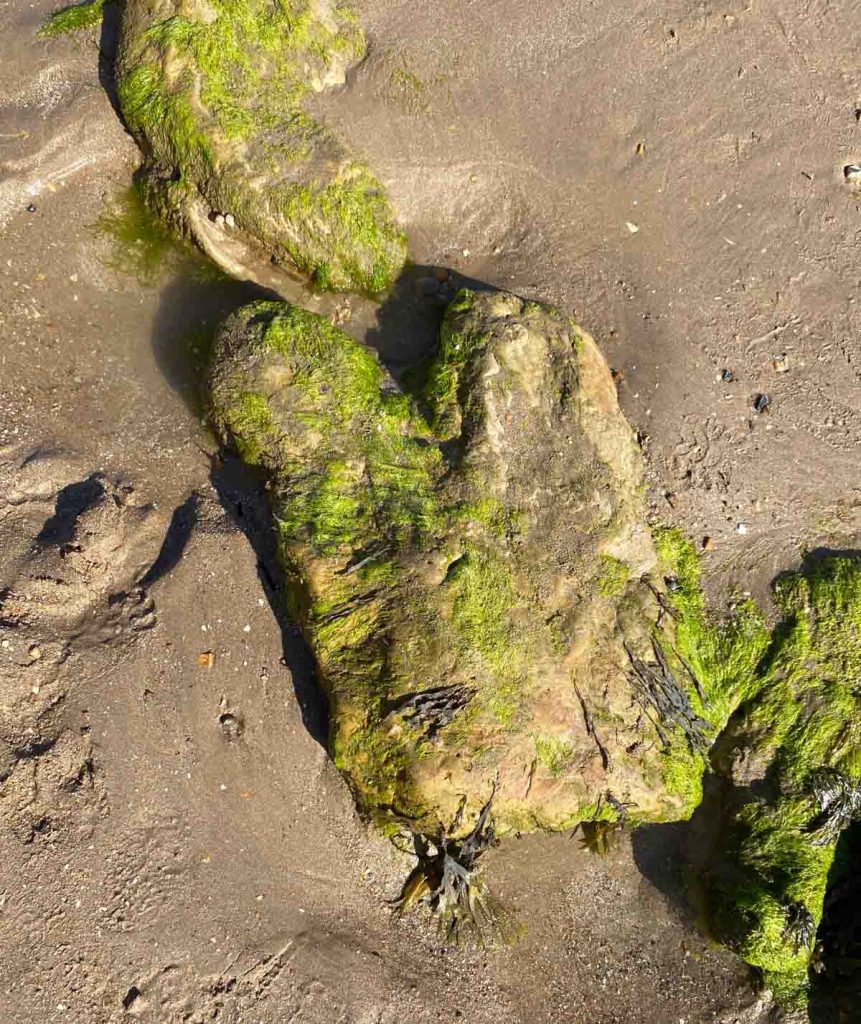
Why are these footprints and fossils important?
They are incredibly important. The footprints show us what different dinosaurs lived where. We can learn about their physical appearances and about the environment that they lived in.
We can also learn whether the dinosaurs moved in groups or on their own. We can also compare them with other prints found in other places in the UK.
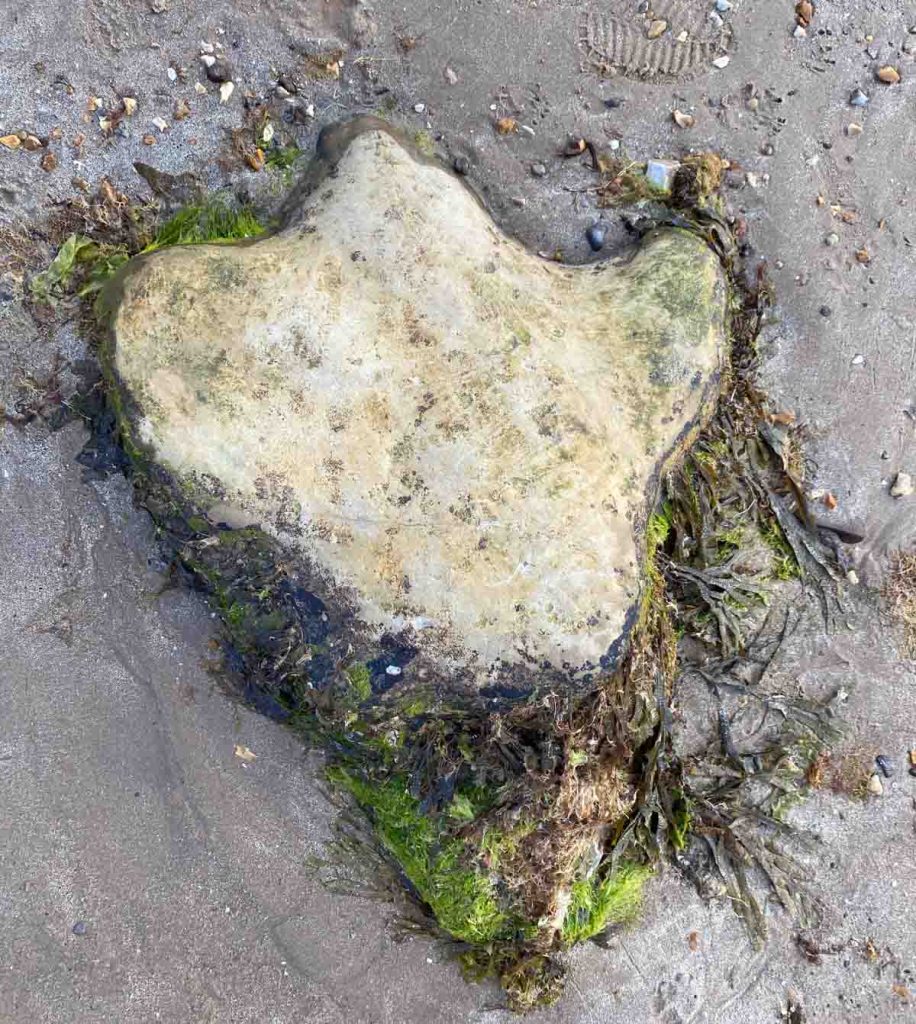
They are also important to the Isle of Wight as they help to attract visitors to the Island and that in turn helps the local economy.
Parking at Compton Bay
There’s a large car park at Compton Bay which is owned by The National Trust. If you are a member of The National Trust then parking is free, but if not you will need to pay on the JustPark App.
There are up to date toilet facilities there and usually an ice cream van for refreshments.
There are spaces for Blue Badge holders too.
Staying safe while fossil hunting at Compton Bay
It’s best to go at low tide where you can clearly see the footprints. Check this online before you go and please check carefully, so that you don’t get stranded by the tides.
Please remember that the cliffs can be unstable so don’t climb on them and no digging at any time.
When looking at the footprints or exploring the coast be careful of slippery rocks and please be very careful of the footprint casts.
They do ask that if you do find anything in the cliff that you don’t touch it and leave it there, take a picture and report it so that it can be investigated properly.
Sandown Bay Dinosaur Museum
If you are really into dinosaurs there’s a fantastic museum in Sandown on the seafront called Dinosaur Isle Museum. There you will find fossils, rocks and minerals that have been found on the Island. You can hear, see, touch and smell the dinosaurs and learn all about them.
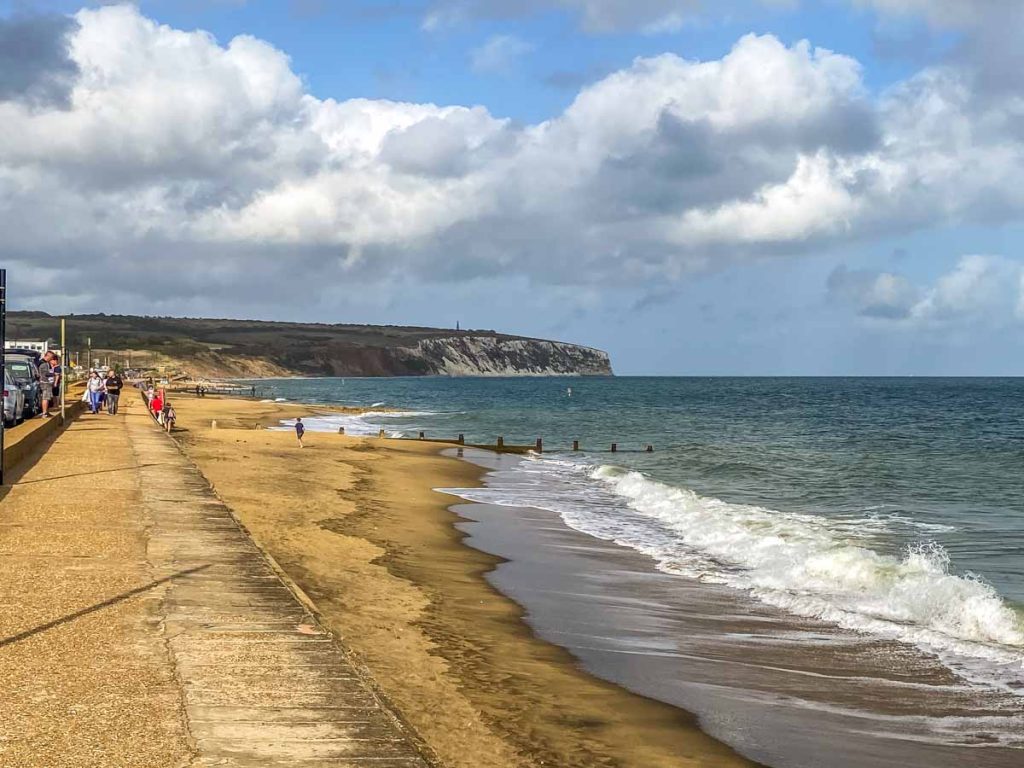
They also organise fossil walks in Yaverland, Alum Bay and Bembridge.
They will also identify any fossils that you have found, which is really handy.
Visiting Compton Bay
Apparently the best times to go dinosaur footprint and fossil finding are in the spring and the summer. The fossils are often found in the cliffs and after the winter erosion, more fossils can be found in the debris.
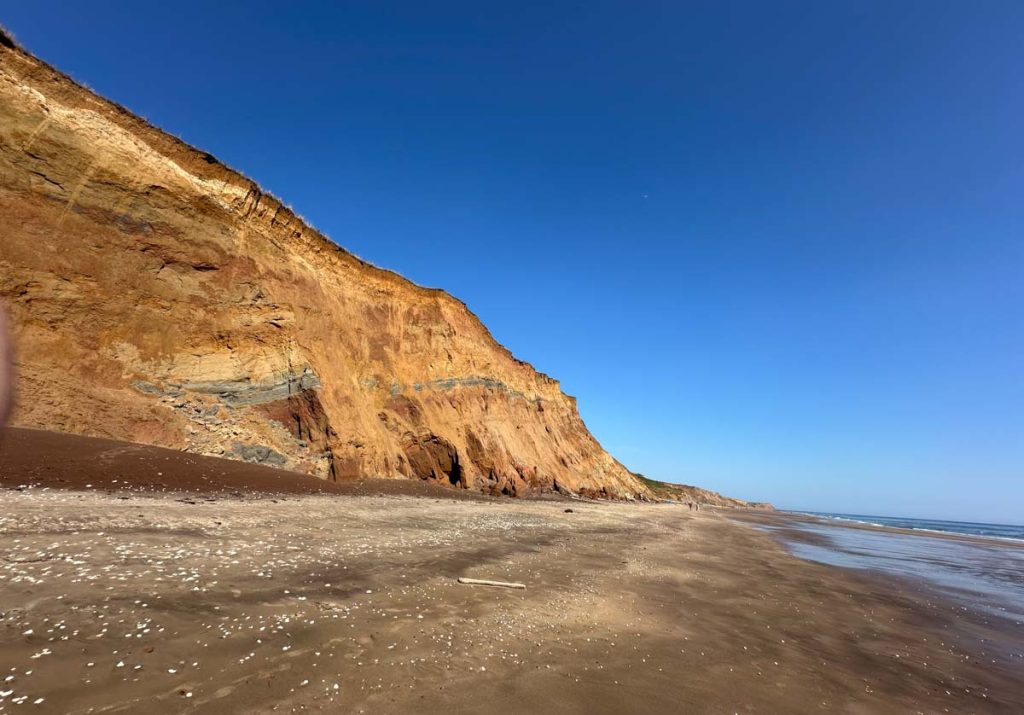
Conclusion
Compton Bay is a definite must to visit when you are on the Isle of Wight. Even if you aren’t into Fossil Hunting or Dinosaurs it’s a beautiful bay with stunning views and a lovely golden, sandy beach with water that looks mediterranean.
The Bay is surrounded by beautifully coloured chalk cliffs. There’s an Ice Cream van parked in the car park most of the time for refreshments and toilets if needed.
The dinosaur footprints are incredible and it just takes your breath away that they are millions of years old. It really is a fantastic experience no matter how old you are. It really does make you think about the history of the earth and the magnificent wonders of history.
When the tide is out the coastline of the beach looks very Jurrasic and I was transported right back to when the dinosaurs were roaming around this coast line. You could just imagine them walking around the area. The sunset there is incredible too, if you like to take pictures.
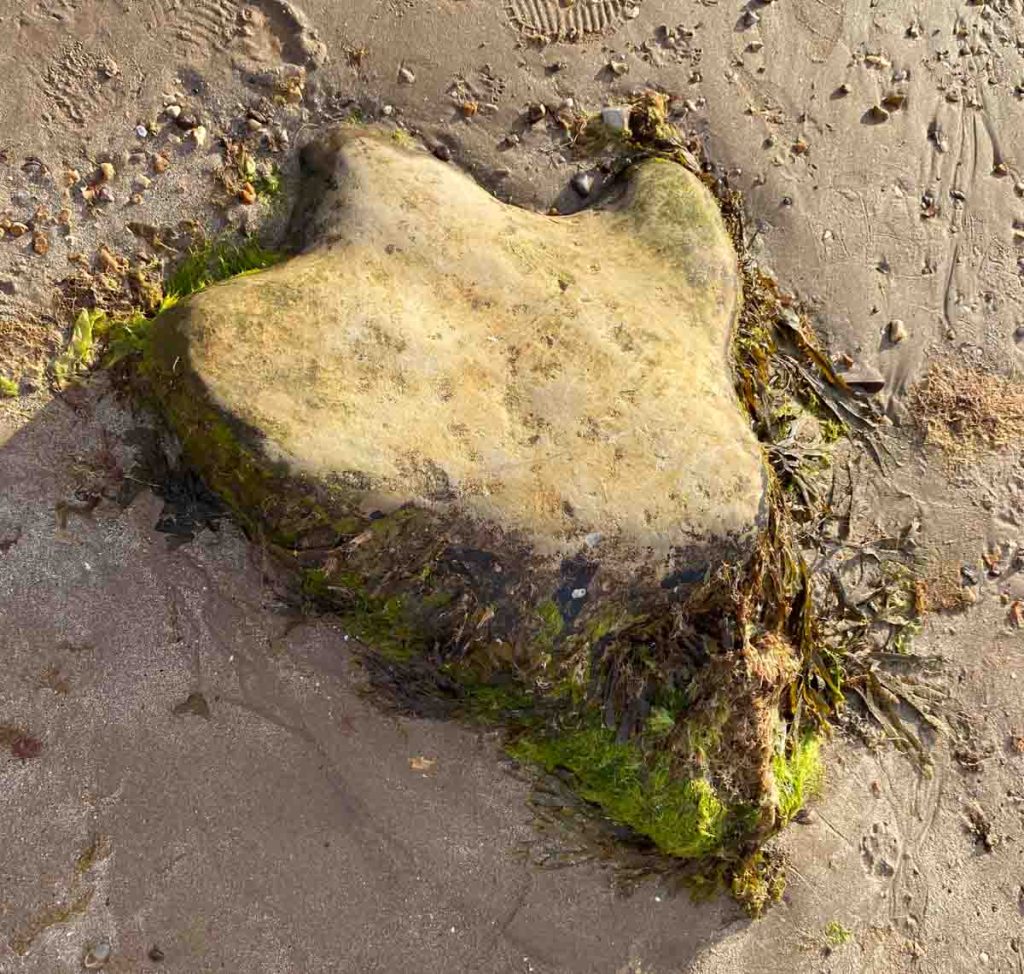
Please don’t forget to check the tides before you go and wear sensible shoes for climbing on rocks and the beach.
Remember that the stones can be slippery and most importantly of all remember to respect the footprints and take care to be careful of them so that everyone can come and enjoy them.
Compton Bay is probably one of the most picturesque beaches that I’ve ever been to and well worth a day out, just to soak in the view and enjoy the tropical waters. It really is a must when you are visiting the Island.
You may also like:
Exploring The Needles and Alum Bay On The Isle of Wight
A Visit To Queen Victoria’s Osborne House on the Isle of Wight
Roarr! Dinosaur Adventure – A Family Day Out




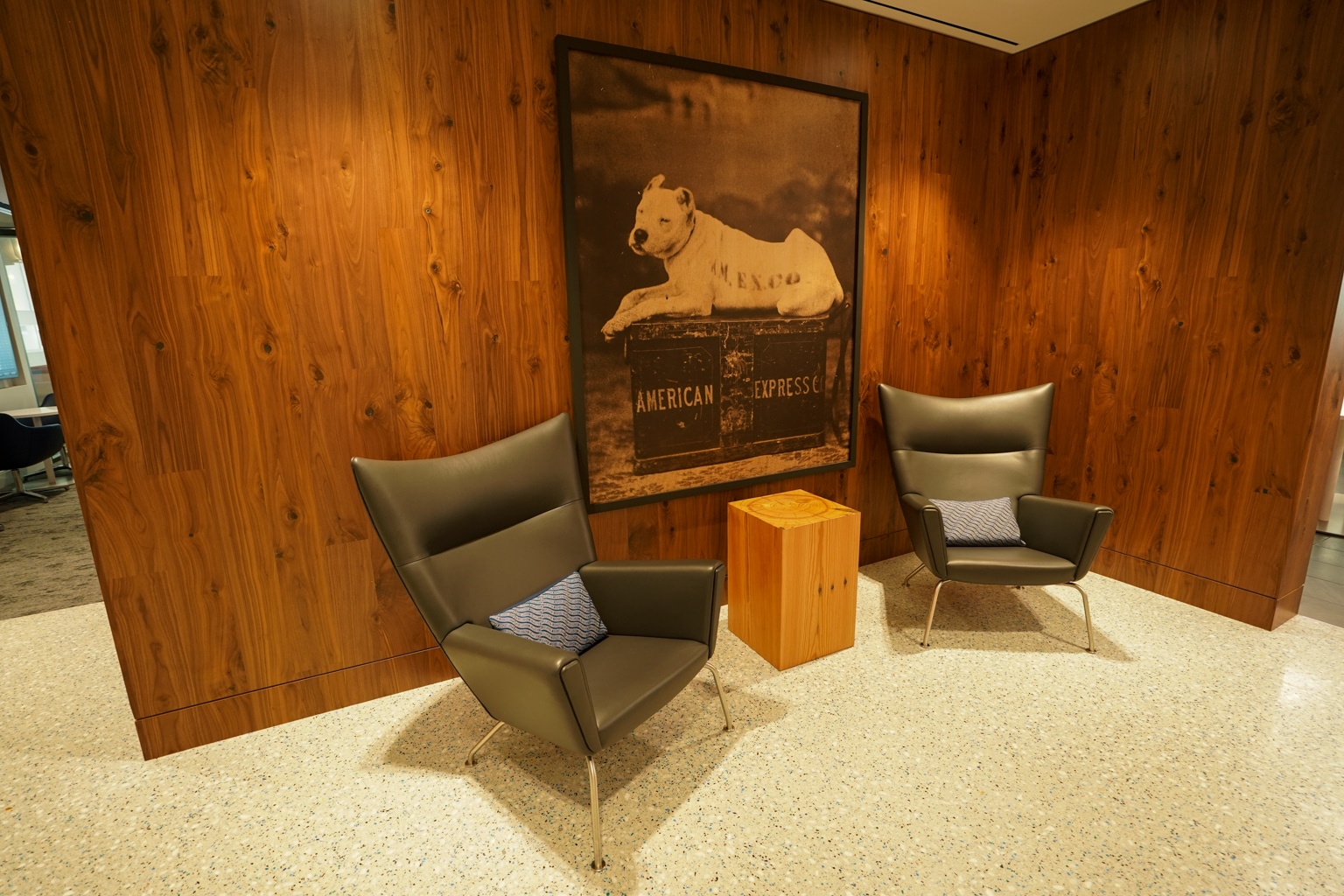


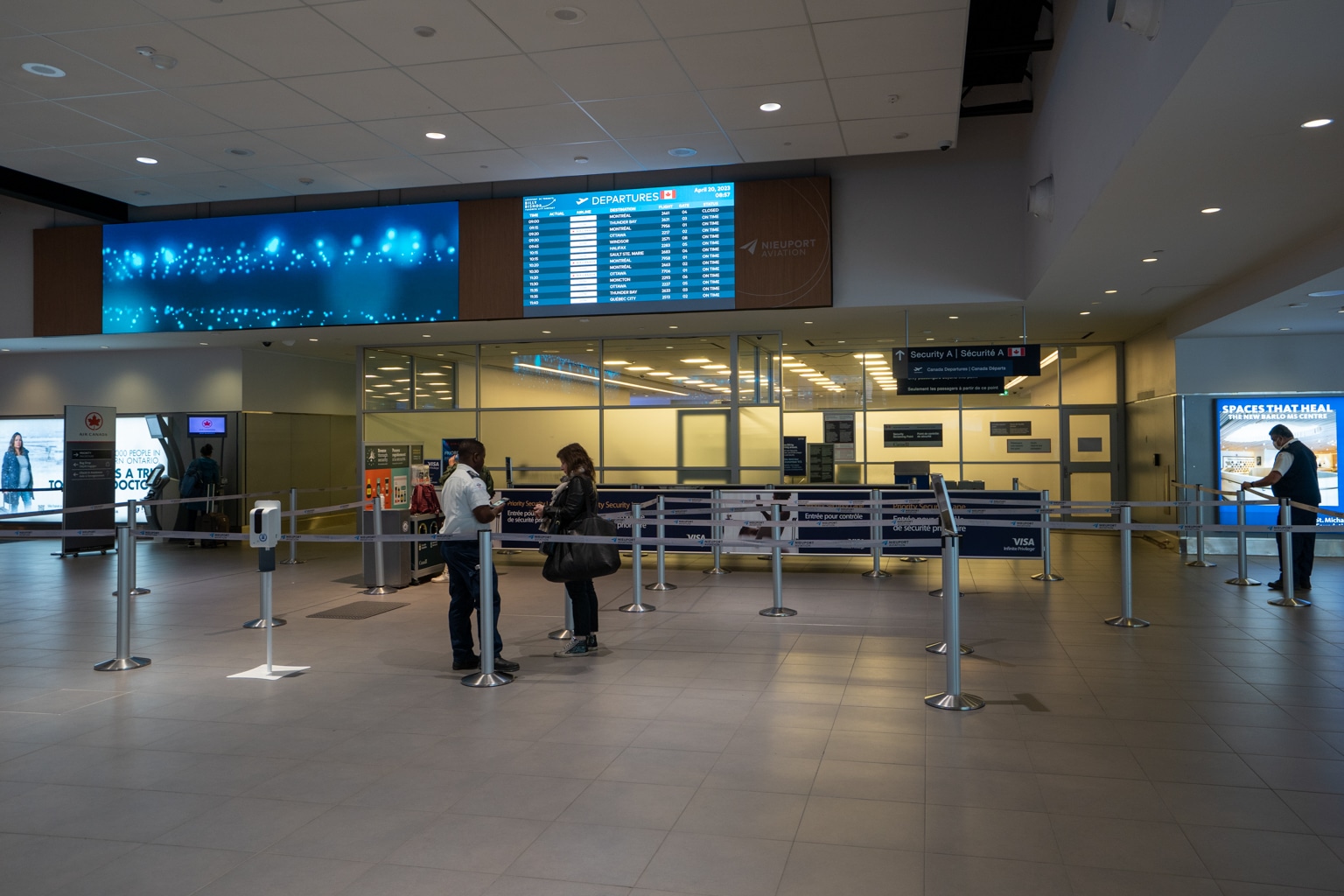



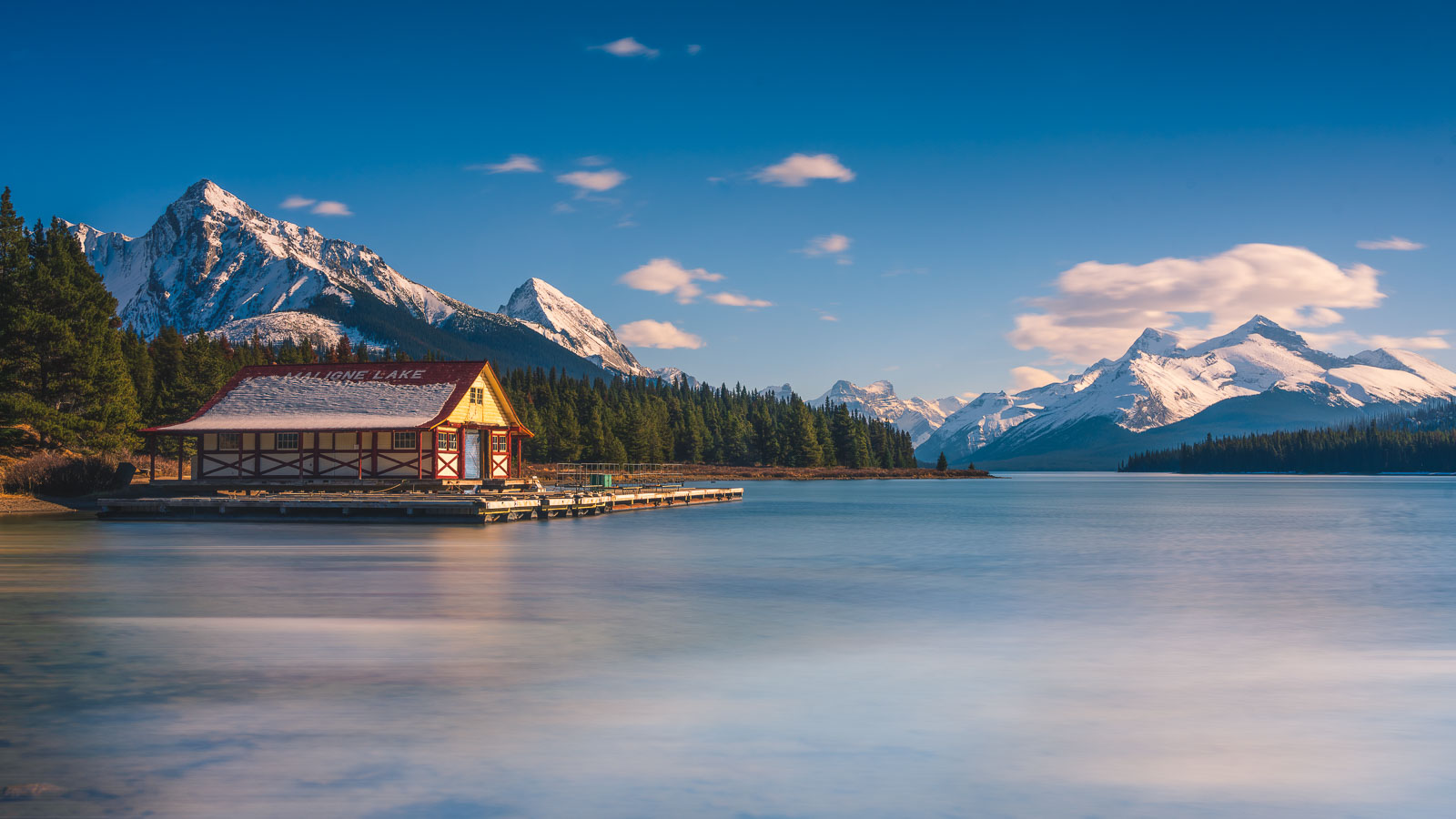






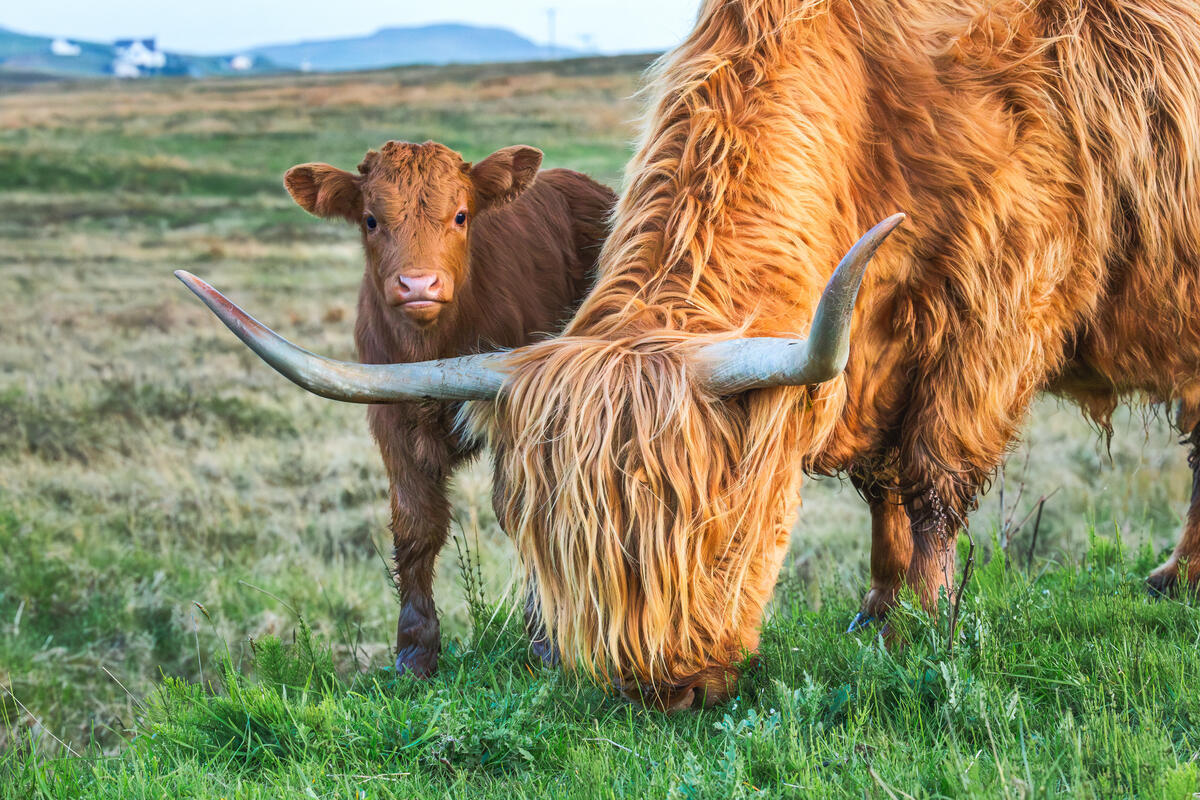
 English (US) ·
English (US) ·